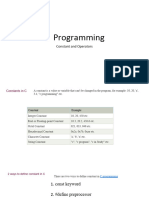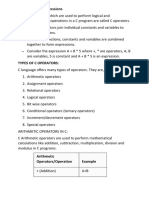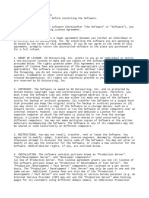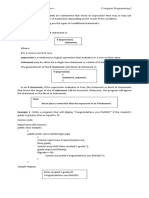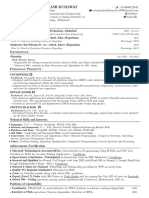0% found this document useful (0 votes)
13 views13 pagesC Operators
The document provides an overview of various operators in the C programming language, including arithmetic, relational, logical, bitwise, and assignment operators. It explains operator precedence and associativity, along with examples for each type of operator. Additionally, it outlines the uses of these operators in performing calculations and comparisons.
Uploaded by
caption americaCopyright
© © All Rights Reserved
We take content rights seriously. If you suspect this is your content, claim it here.
Available Formats
Download as PDF, TXT or read online on Scribd
0% found this document useful (0 votes)
13 views13 pagesC Operators
The document provides an overview of various operators in the C programming language, including arithmetic, relational, logical, bitwise, and assignment operators. It explains operator precedence and associativity, along with examples for each type of operator. Additionally, it outlines the uses of these operators in performing calculations and comparisons.
Uploaded by
caption americaCopyright
© © All Rights Reserved
We take content rights seriously. If you suspect this is your content, claim it here.
Available Formats
Download as PDF, TXT or read online on Scribd
/ 13






































